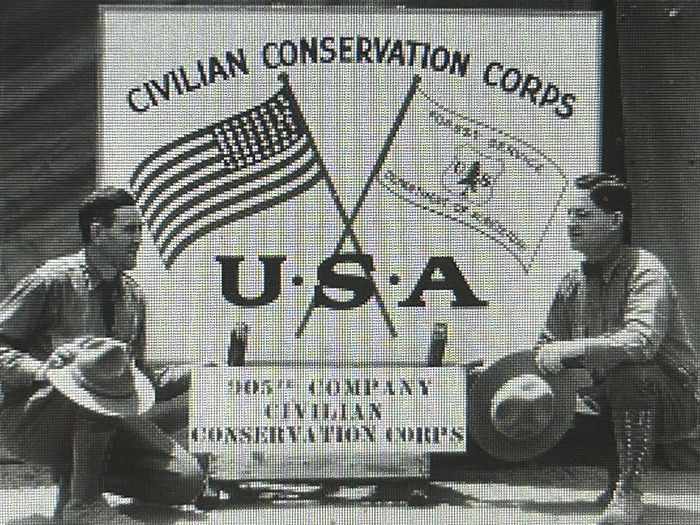CCC camps left their mark in Minnesota
News | Published on November 21, 2023 at 2:54pm EST | Author: henningmaster
0Many state parks were formed by CCC projects

Minnesota had more than 100 CCC camps operating from 1933 to 1942.
By Tom Hintgen
Otter Tail County Correspondent
The Civilian Conservation Corps (CCC) during the 1930s was a work relief program that provided employment to 3.5 million young men during the Great Depression.
Young men from 17 to 25 who worked as part of the CCC built state parks, planted millions of trees, restored river banks, built fish hatcheries, fought fires and restored our nation’s natural resources. Minnesota had more than 100 CCC camps from 1933 to 1942.
Another federal program was the Works Progress Administration (WPA) which ran from 1935 to 1943. This program was designed for men over the age of 25. They carried out public works projects, including the construction of public buildings and roads.
Up to 200 civilian enrollees comprised a CCC camp, with camps spread across the entire United States.
Each worker received $30 in payment per month, with board and room provided by the federal government. The men were required to send $25 of their monthly earnings home to support their families. The $25 would amount to $573 in today’s dollars.
The CCC boys came into nearby towns and helped the local economies in the 1930s. Even $5 a month could go a long way in those days. It cost only 25 cents to be admitted to a movie theater.
William Jamerson, who authored a CCC book titled “Big Shoulders,” told attendees during a presentation at the Fergus Falls Public Library a year ago that the CCC turned boys into men by giving them discipline and teaching them work skills.
President Franklin Delano Roosevelt (FDR) created both the CCC and WPA as emergency relief programs during the Great Depression in the 1930s and into the early years of the 1940s.
CCC camps and
Itasca State Park
Visiting Itasca State Park is an annual event for many families in Otter Tail County, in all four seasons of the year. One quickly comes to appreciate the work of the Civilian Conservation Corps (CCC) crews.
By June 1933, CCC projects at Itasca State Park were off and running, along with projects at other locations across Minnesota.
CCC workers built new park structures, cleared lakes and ponds, improved beaches, landscaped the grounds and developed campgrounds, picnic grounds, overlooks and parking areas.
A major 1930s CCC project at Itasca State Park was a seven-foot wide concrete piling and rock dam constructed at the outlet of Lake Itasca. This stabilized the flowage. In the words of project planners, this also “made for a beautiful site at the start of the Mississippi River.”
Many visitors from Otter Tail County take the boardwalk for a 10-minute walk to the Old-Timers cabin built by the CCC. The boardwalk starts a short distance, down the hill, from Douglas Lodge.
CCC workers have a lasting legacy at Itasca State Park.
